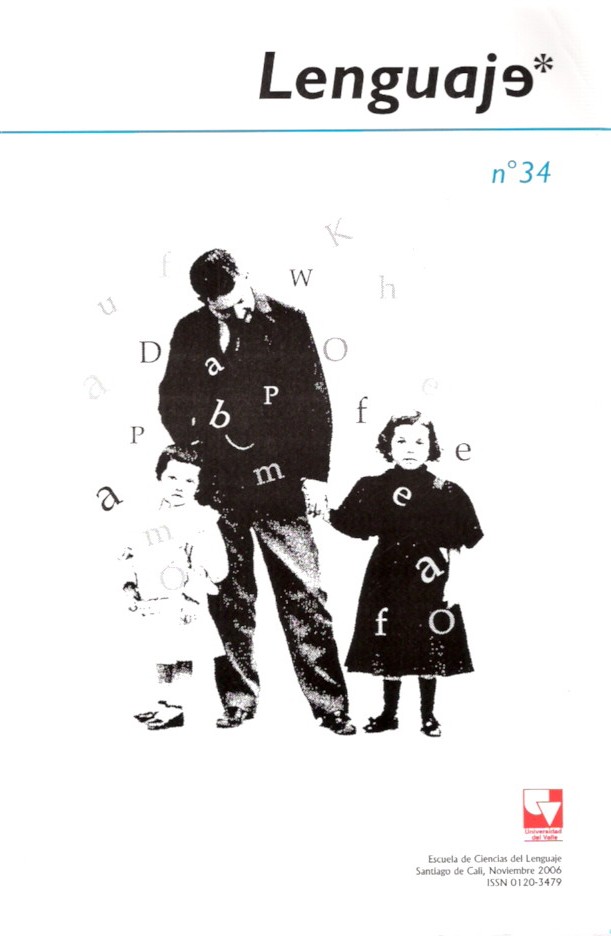La transparencia morfológica y conceptual en la adquisición de términos centrales y periféricos
Contenido principal del artículo
ANGLIN, J. (1977). word, object and conceptual development. New York: Norton.
AUZA, A. (1999). El aprendizaje de una categoría léxica: el caso de las ocupaciones (tesis de maestría inédita). Universidad Autónoma de Querétaro, México.
ㅡ (2005). Adquisición morfológica nominal en el niño de 3:7 a 4:0 años: ¿es una estrategia nominal la que se emplea en el aprendizaje de una clase léxica? Asociación Mexicana de Lingüística Aplicada AMLA, II, 1, pp. 105-114.
AUZA, A. y R. MALDONADO (2005). Determinantes en la adquisición verbal, el caso de los nombres de oficio. Dimensiones aspectuales en español (Eds.) M. Lubbers Quesada y R. Maldonado. México: UNAM-UAQ, pp. 245-274.
AUZA, A.; D. JACKSON y R. MALDONADO (1998). “Estrategias de una productividad morfológica en el niño de tres a tres años y medio: el caso de los nombres de ocupaciones”. En Estudios sobre la adquisición de algunas lenguas en México. Función, pp. 17-18.
一 (2001). Sobre la función de los sufijos nominales en raíces oscuras. En C. Rojas y L. De León (eds.) L Adquisición de las Lenguas Materna. México: UNAM-CIESAS
BLOOM, P. (1994). Language Acquisition. Cambridge, Massachusetts: The MIT Press.
CLARK, E. V. (1973). “What's in a word? On the child's acquisition of semantics in the first language”. En T.E Moore (ed.9 Cognitive Development and the Acquisition of Language. New York: Academic Press.
一 (1993). The lexicon in acquisition. New York: Cambridge University Press (Cambridge Studies in Linguistics 65).
GARDNER, M. (1979). Expressive One-Word Picture Vocabulary Test (EOWPVT), Spanish version 1979, Academic Therapy Publications, Novato.
GOLDSTONE, R. L. (1994). “The role of similarity in categorization: providing a groundwork” Cognition, 52, pp. 125-157.
JONES, S., SMITH, L. y LANDAU, B. (1991). “Object properties and knowledge in early lexical learning”, Child Development 62, pp. 499-516.
LAKOFF, G. (1987). Women, Fire and Dangerous things. Chicago: Chicago University Press.
LANGACKER, R. (1987). Foundation of Cognitive Grammar. Vol. 1, Theoretical Prerequisites. Stanford: Stanford University Press.
MACWHINNEY, B. (1985). “Hungarian language acquisition as a exemplification of a general model of language development”. En D.I. Slobin (Ed.) The Crosslinguistic study of language acquisition: Vol. 2 Theoretical Issues. Hillsdale, New Jersey: Lawrence Erlbaum Associates.
一 (1998). Competition and lexical categorization San Diego: UCSD Soft Reserves (Psychology 215).
一 (1998). “Models of the Emergence of Language”. Annual Review of Psychology, 49, pp. 199-227.
MACWHINNEY, B. y BATES, E. (1987). “Competition, Variation and Language Learning”. En B. MacWhinney (ed.) Mechanisms of language Acquisition Hillsdale, New Jersey: Lawrence Erlbaum.
NINIO, A. y SNOW, C. (1988). “Language acquisition through language use: The functional sources of children's early utterances”. En Y. Levy, I. Schlesinger, y M. Braine (Eds.) Categories and processes in language acquisition. Hillsdale, N.J.: Lawrence Erlbaum, pp. 11-30.
O´HARA, E. y DAWSON, J. (1989). Spanish SPELT-II, Structured Photographic Expressive Language Test, Janelle Publications, Inc. Dekalb.
PETERS, A. M. (1997). “Language typology, prosody, and the Acquisition of Grammatical Morphemes”. En D.I. Slobin (ed.) Vol. V. The Crosslinguistic study of Language Acquisition. Hillsdale, N.J.: Lawrence Erlbaum, pp. 136-197.
ROSCH, E. (1973). “On the internal structure of perceptual and semantic categories”. En T.E. Moore (Ed.) Cognitive development and the acquisition of language, New York: Academic Press.
SLOBIN, D. I. (1985). “Crosslinguistic evidence for the language-making capacity”. En d.i. Slobin (Ed.) The Crosslinguistic study of language acquisition: Vol 2 Theoretical Issues. Hillsdale, New Jersey: Lawrence Erlbaum Associates.
TAYLOR, J. (1990). Linguistic Categorization. Prototypes in Linguistic Theory Oxford: Oxford University Press.





